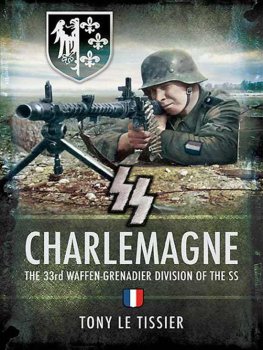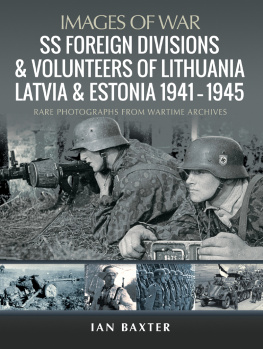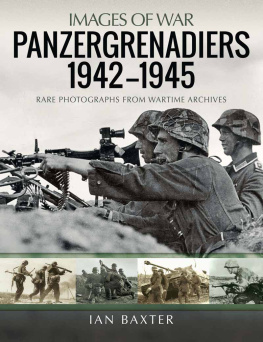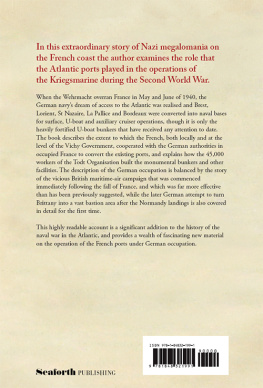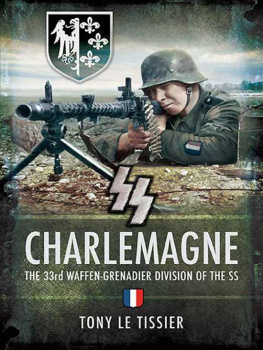
First published in Great Britain in 2016 by
Pen & Sword Military
an imprint of
Pen & Sword Books Ltd
47 Church Street
Barnsley
South Yorkshire
S70 2AS
Copyright Christophe Lguerandais 2016
ISBN: 978 1 47385 656 1
PDF ISBN: 978 1 47385 659 2
EPUB ISBN: 978 1 47385 657 8
PRC ISBN: 978 1 47385 658 5
The right of Christophe Lguerandais to be identified as the Author of this Work has been asserted by him in accordance with the Copyright, Designs and Patents Act 1988.
A CIP catalogue record for this book is available from the British Library
All rights reserved. No part of this book may be reproduced or transmitted in any form or by any means, electronic or mechanical including photocopying, recording or by any information storage and retrieval system, without permission from the Publisher in writing.
Typeset in Ehrhardt by
Mac Style Ltd, Bridlington, East Yorkshire
Printed and bound by Replika Press Pvt. Ltd.
Pen & Sword Books Ltd incorporates the imprints of Pen & Sword Archaeology, Atlas, Aviation, Battleground, Discovery, Family History, History, Maritime, Military, Naval, Politics, Railways, Select, Transport, True Crime, and Fiction, Frontline Books, Leo Cooper, Praetorian Press, Seaforth Publishing and Wharncliffe.
For a complete list of Pen & Sword titles please contact
PEN & SWORD BOOKS LIMITED
47 Church Street, Barnsley, South Yorkshire, S70 2AS, England
E-mail:
Website: www.pen-and-sword.co.uk
Contents
Introduction
After the launch of Operation Barbarossa in June 1941, in addition to those nations allied to Germany, tens of thousands of volunteers from other occupied countries flocked to join the various expeditionary forces in order to participate in what promised to be an epic fight. Although not willing to return to a state of war following its defeat the year before, France, which had seen a large part of its territory invaded, now witnessed the birth of the so-called Lgion des volontaires franais (LVF) [Legion of French Volunteers]. The organisation was set up with the help of the German ambassador in Paris, with the aim of fighting on what was soon to become the Eastern Front. With the conviction that they were protecting their homeland from the threat of Bolshevism, many of the volunteers came from political parties that had sided with the Germans. Following an agreement with Hitler, units were formed of volunteers from the so-called non-German countries, while those from Germanic countries joined the Waffen SS.
From 1942 onwards, many wounded or reformed veterans decided to continue the fight and push their physical limits by joining the ranks of these various auxiliary groups, which were also open to younger recruits with no previous front-line experience. Indeed, despite Hitlers invasion of his enemys land [Russia], many areas behind the front-line were still far from being pacified, forcing him to send new units to these areas to carry out such a task. The lengthening lines of communication in the East and Rommels African Front meant that Hitler was seriously struggling from a lack of man-power. This was to be filled, in part, by a massive recruitment of foreign labour, which was ready to flock to his banner and serve him in his propaganda war.
The commitments in the East meant a compulsory labour service was officially established in Germany, and the competition between the various paramilitary units to recruit on its behalf was fierce. The LVF was too politicised and had too much French spirit for some. It was shunned by many young men, who preferred to admire the troops in their silver runes, which they saw as being more of an elite army facing down this European creation. In July 1943 they were finally allowed to join the SS, although not everyone was willing to go to the East to defend his ideals. After the defeat at Stalingrad, the decline of the Afrika Korps and the Battle of Kursk, the Wehrmacht was facing retreat on all fronts. There were those who believed that the struggle against anti-communism must now take place on home soil with the help of pro-German organisations.
According to Reichsfhrer Himmler, these foreign fighters against Bolshevism were more trustworthy, as they were made up of volunteers with a common ideal and following his numerous requests to Hitler that they be incorporated into his SS, his wishes finally came true in 1944. Amalgamated into a single unit that would fight on foreign soil until the last day of the war, these Frenchmen in German uniforms would follow the oath that they had sworn until its conclusion.
This book is not a history of French collaboration, but a representation of the main units in which around 15,000 men fought side-by-side with the military forces of the Third Reich. It is not about Alsace-Lorraine, the region attached to Germany, which consequently saw many young Frenchmen forced into the different branches of the German Army and who were to suffer heavy losses on the Eastern Front. Nor is it about the French who fought with Mussolini, or those who were incorporated into Colonel Skorzenys Brandenburg German Special Forces unit. The same goes for those working in France as members of the Hilfpolizei (auxiliary police), as interpretors for the Kommandanturs and Feldgendarmerie, the secretaries at the recruitment offices or various German departments (SiPo, SD, etc.) as well as the numerous plain-clothed agents working for the Abwehr [German military intelligence organisation].
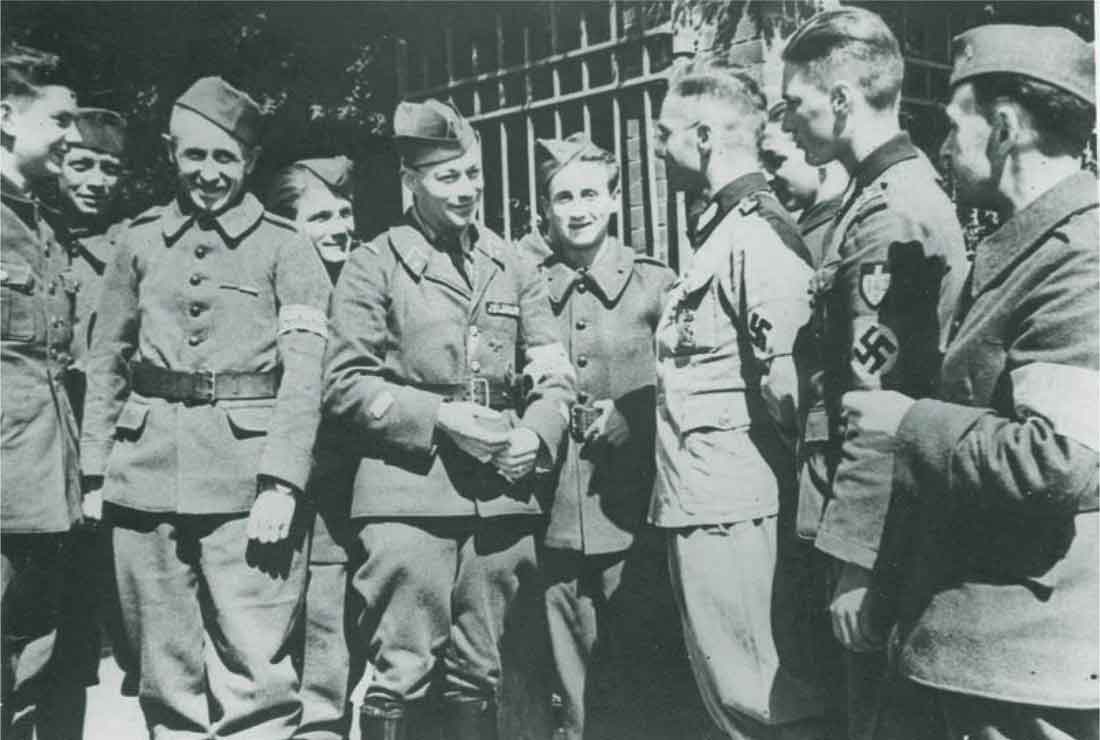
Frenchmen in French uniform speaking with German soldiers, one of whom is a member of the RAD. They wear white armbands on their left arm proclaiming Im Dienste der deutschen Wehrmacht [In Service of the German Army], indicating that they are attached to a German unit. The man in the centre has been discharged from the LVF and has been decorated with the Croix de guerre lgionnaire.
Chapter One
The Legion of French Volunteers Against Bolshevism (LVF)
The LVF was created in Paris after being approved by Adolf Hitler in the summer of 1941, on the condition that the initiative would follow the collaborationist pro-German political parties, with no commitment to the French government, who instead preferred to keep its distance. These political groups were entrusted with recruiting volunteers for a new regiment in the German Army that was to fight in Russia. At the same time, anti-Communist White Russians arrived en masse from their motherland with the aim of fighting the Bolshevist Red Army.
The Deba camp near Krakow, in occupied Poland, was the chosen location for the training of the officially named Franzsischer Infanterie-Regiment 638, commanded by the French Colonel, Roger Labonne. The first contingent of 803 men and 25 officers arrived on 8 September 1941 to form the 1st Battalion, but a surprise awaited them; they learnt that they would have to fight whilst wearing a German Army uniform, the same uniform they had been fighting against for the past year and not the French Army uniform that had been promised them when they signed up. France was not at war with Russia and consequently the Hague Convention forbade them from fighting in their national uniform. This clause likewise affected the Spanish, Belgians, Danish and Dutch, who were also involved in the same struggle. A concession was made allowing them to wear a tricolour cloth badge on the right sleeve of their field uniform, thus distinguishing them from other soldiers. A second contingent of nearly 800 volunteers arrived on 20 September to form the 2nd Battalion. On 5 October the recruits were faced with a new challenge; they had to swear an oath of loyalty to Adolf Hitler, as was usual practice for the German Army. After several weeks of training, the 1st and 2nd Battalions set off for the front at the end of October. The legionnaires, divided into fourteen companies under the command of French officers, retained their flag and the use of weapons currently used by the French Army. By late November they were attached to the 7th Division of the 7th Bavarian Infantry Corps, commanded by General von Gablenz, and found themselves in the front-line facing the 32nd Siberian Division, near Djukowo, 70km from Moscow. Despite the exceptional cold and fatigue caused by severe hunger, they fulfilled their mission and were replaced by a German unit in early December. Nevertheless, a reorganisation of the unit was needed as a result of the missing, and dead, soldiers, as well as the incompetence that had been revealed at several levels, including management. A severe purge was carried out at the Kruszyna camp, in the General Government of Poland, and many political soldiers took the opportunity to discharge themselves from the army and fight for their homeland once more. The 2nd Battalion was disbanded with all the men being put into the 1st Battalion and training began from scratch. Meanwhile, a third battalion had been in training at Deba since December 1941, and during all the years of its existence, the legion in the East would regularly receive new recruits from France.
Next page

